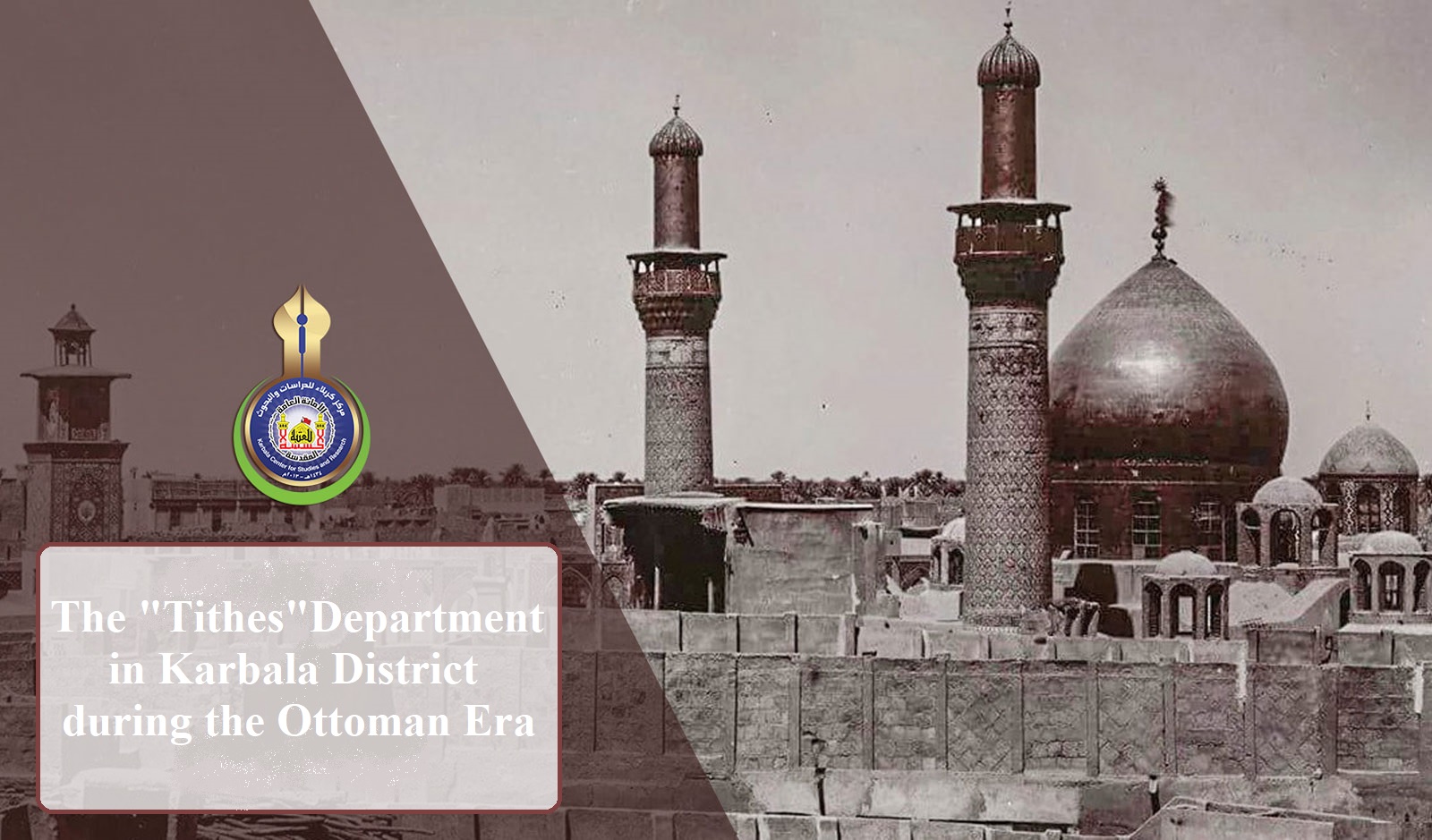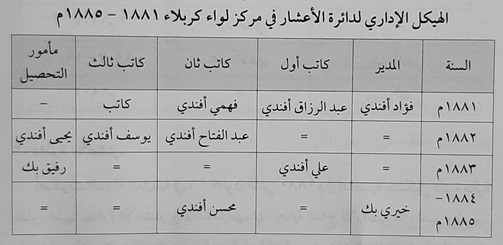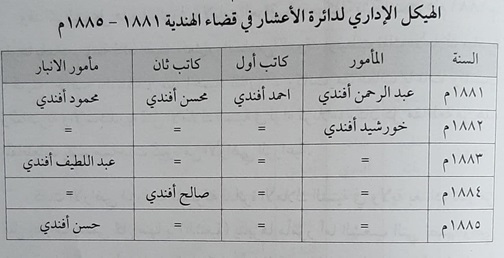On January 16, 1880 AD, the Ottoman Empire issued a supreme decree to form a financial department called the "Tithes" for the purpose of the taxation of agricultural land production and animal cattles, which was known then as "Koda". That department was divided into three sections according to the Ottoman administrative units, which are state, district, sub-district, as follows:
A. At the state center, the department was headed by the Nadhir "Principal," the membership of the head of the clerks, three assistants, a writer, a document holder, and a registrar.
B. In the district, it was headed by a director, the membership of a first, a second and a third clerk, as well as a collector.
C. in the sub-district, it was headed by a senior employee, the membership of a first, a second, and a third clerk, as well as a collector.
The establishment of that department in the Karbala district and in the sub-district of Al-Hindiya was delayed until 1881 AD, and in the district of Najaf, it was formed in 1822 AD, as its administrative staff was limited to the senior employee only, and it was never established in the sub-district of Razzaza.
This department was canceled after ten years from the date of its establishment, as the financial departments in the district has taken over the task of collecting taxes that the tithes department was collecting.
The administrative structure of this department in the Karbala district was as illustrated in (Fig. 1).
In the Al-Hindiya district, the administrative structure of this department was big due to the capacity of agricultural lands and the abundance of their production, and was as illustrated in (Fig. 2).
Source:
Mawsueat Karbala Al-Hadharia "Karbala Civilizational Encyclopedia".
A publication of Karbala Center for Studies and Research
The Historical Ax, Department of Modern and Contemporary History, Ottoman Documents
[Vol. 7, Pg. 239-242].



